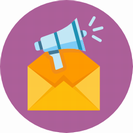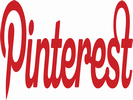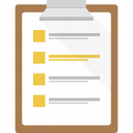How to add Google AdSense to your website quickly
- Posted by Livecity In category PPC & Marketing
You have probably spent a lot of effort and time on your website. Why not get compensated for the hard work? Here is how to use Google AdSense to generate a few extra coins.
What is Google AdSense?
Google AdSense is an advertising system where sponsored ads appear on your website. Google will automatically check the web pages where the ads are to be placed and will display relevant advertisements. This, in turn, helps create highly targeted adverts for the advertised page allowing you to earn higher returns as a publisher, the advertising network (Google) and the advertiser.
Before starting
You must have an already existing site before applying for Google AdSense. The team at the program will review your site before they accept it, so make sure your website does not have some “under construction” page.
Ensure that you are running a “G-rated” website. AdSense does not allow controversial topics such as adult into its program. Next, ensure that you have a Google-approved AdSense privacy policy on your site. To find an AdSense Privacy Policy, just Google “AdSense policy generator” (without the quotes) and settle on the first result you find. All you have to do is input information about your website, email, your cookies use, and then choose AdSense and create My Privacy Policy. Add the information generated to your site’s Privacy Policy.
Step 1: Apply to Google
Once you have a fully functional site with a Google approved privacy policy, apply to Google AdSense. Google will send an email to verify the email address you provide and follow the instructions provided. Once you have verified the information, the Google AdSense team will receive your application, and they will review your website. Reviewing is likely to take a few days, so continue posting on your site as usual.
Step 2: Configuring your ads
Once the account is approved, log in and get the HTML code that you will paste into your web page. The code is found under the “AdSense Setup” tab. You can customize the advertisement appearance; choose between image or text ads, or a mixture of both. Once you are through with customization, just cut and paste the code into your website.
Step 3: Pasting Google AdSense code onto your web page
Ensure that you insert the code into your website as HTML. Livecity's WYSIWYG editor will let you do that easily.
Step 4: Your earnings
Once earnings from your Google ads reach a certain amount the first time, Google will send a card by snail mail with characters printed on it. Log into your AdSense account and enter the characters (PIN) before you can receive payments. Delivery duration of the card is dependent on where you live and threshold amount defined by Google. You will only have to do this once during the lifetime of your account.
Things you should never do
- Never click your Google ads, even if testing them since Google will regard this as fraud and kick you out of the program
- Never encourage family members to click on the ads because any clicks from your household look like clicks from you
- Be realistic and do not expect a fortune from ads, the revenue earned per click is about a cent or two assuming Google will not discount some of them for some reason
If you already have a website, apply to AdSense now. If not, Livecity's website builder can help you create a website immediately. Enrolling to the Google AdSense program takes time to get things into full swing, therefore, do not wait until you are desperately in need of money before you start.
What is Google AdSense, and how does it work?
- Posted by Livecity In category PPC & Marketing
If you want to generate revenue from the visits your website gets, you don't have to handle the whole process yourself. In fact, you wouldn't want to. Soliciting sponsors and advertisers is a complicated and time-consuming job, and if you're the webmaster too, you'll have to be able to track their performance and estimate the value of space on your website. Google AdSense eliminates the need for any of that, putting top technology to work for your website.
Introduction to Google AdSense
Google AdSense is a free and comprehensive service that makes it easier for website developers to incorporate ads into their online content. Technically, it's a program that generates relevant banner ads and sponsored links based on the content of a website, then supplies a steady rotation of these ads (usually three per site) throughout the year. The ads themselves are determined by the website and its visitors, and webmasters don't have to interact with the sponsors directly or conduct any transactions with anyone but Google. If the ads perform well, the owner of the content receives a check from Google AdSense that represents the money those advertisers paid. Some people wait a year for their first check, while others derive a regular income from Google AdSense.
How AdSense works for your website
For most major websites that publish external ads, a marketing team has to figure out the appropriate advertisers and rates, and the web designer has to find a way to incorporate the graphics, videos, text and interactive content into the layout without letting it take over. Google ads, on the other hand, are curated automatically and can be customized easily. They target your particular online demographic with the help of cookies that allow pull location information and search history from your visitors, as well as a Java code that generates context clues from the rest of the content on your website.
The pay you'll receive from Google AdSense will come from one of two methods of collection from advertisers: per-click and per-impression. Some ads generate revenue every time another person opens that webpage and views the ad, but others don't pay off unless people actually click them. If the ads link to retail sites, you might even derive extra profits from clicks that led to purchases. Google advertisers who already work with Google itself can opt out of being included in this service, but if they don't, they can submit sealed bids that determine the price of each ad.
Why Google Ads are different
The AdSense program isn't just convenient and potentially lucrative; it's also a wise way to keep your website attractive and user-friendly. That's because Google is so good at making ads feel seamless, both in subject and in display format. You don't have to worry about your website looking tacky or busy, or filling it with distractions that take away from the content itself. Instead, you can count on Google's marketing expertise to make the ads as unobtrusive as possible. In fact, the full impact of Google ads actually depends on the fact that they're such an organic part of the online experience.
Treat your readers to ads that don't feel like ads at all, and treat yourself to a paycheck that rewards your keyword-rich content. See if your website is eligible to join the Google AdSense system today.
10 Ways to Drive Newsletter Readership and Engagement
- Posted by Livecity In category PPC & Marketing
A newsletter is a valid way to reach customers, stay in touch with clients and even to make sales. Some experts estimate about a 25% open/read rate for email newsletters in general. Here are some tips to encourage greater readership and engagement:
- Choose newsletter templates that are professional and aesthetically appealing, like those available from LiveCity.com, the free website development tool company. The overall appearance of the newsletter can make the difference between whether a person who opens the newsletter reads it and stays around to engage or is turned off and closes the email.
- Add your contact information, website, email, phone and fax to every issue. Make it a permanent part of the newsletter templates you use. Having this information prominently displayed encourages the reader to write, call or click through to the website.
- Select content that is lively, varied, timely, fresh, valuable and relevant to the target audience so they will look forward to each issue. You can choose from many types of content: a blog on your website, an article, a guest post, a video, a link to a forum thread, cartoons, photos, graphics, client testimonials, inspirational quotes, advertisements and more.
- Instead of giving the entire article, give an enticing lead-in paragraph and a link to "read more." That link will carry the reader to your website or blog to read the rest. While there, he or she may find other interesting things to look at (hopefully).
- Encourage feedback. Ask for reader opinions. Develop interactive surveys and polls to embed as a box in the newsletter.
- Showcase what your company has been doing. Add a "Behind the Scenes" column, a press release, a media mention, upcoming seminars and events. All of these would include a brief but interesting lead-in and then a link to the rest of the information on your website.
- Tell your readers through words to take action. Use call-to-action words, like "Sign up now for our seminar," "Contact us," "See our latest events online," or "View our YouTube video."
- Encourage readers to share your newsletter by forwarding it and let them know every issue you have an archive of older issues on the website in case they want to read something later. Provide a link to "older issues."
- Highlight special sales / deals available for limited time only or exclusively for newsletter readers.
- Add all your social media buttons to the newsletter so readers can connect with you through Facebook, Twitter, Google Plus, Pinterest, YouTube and any others.
Driving newsletter readership and engagement should be a primary goal of every newsletter. Newsletter templates that are designed well, without clutter and distractions, entice readers to stay around but the content still needs to be compelling for them to stay around. Make it as easy and simple as possible for your readers to click through to the website, engage with you on social media, share your content, send you an email, attend an event, or buy your products. They will be happy that you simplified the process and that should make you happy too.
How to Write a Newsletter in 10 Steps?
- Posted by Livecity In category PPC & Marketing
Writing a newsletter is not just about generating great content and sending it out. There is a little more involved than that. Deciding what your newsletter should focus on (the general theme or topics), choosing a name for the newsletter, selecting a template, creating the editorial calendar and selecting a method of delivery all factor into your process.
1. Begin by deciding the name of your publication and your general theme or topic. If it is a business newsletter, then the topic should have something to do with your business. Once you have decided the theme or topic, you can start thinking of ideas for content within that topic area.
2. Select the right template for your newsletter. LiveCity.com has a wide variety of professional newsletter templates so you can choose one you like and be ready to go in moments.
3. Decide your goals. What do you hope this newsletter will achieve? To increase customers for your business? To drive traffic to your website? To generate goodwill between your readers and your company? To build brand awareness? To share important information and updates with clients or colleagues? Write down your goals so you can plan a strategy to accomplish them within the copy.
4. Do you plan to write the newsletter articles yourself or outsource? If outsourcing, locate a reputable writer or writing service. Other types of copy might include photos, video links, advertising, guest articles, press releases and media mentions.
5. Create a tentative editorial calendar. Plan the newsletters as far into the future as you can, and jot down ideas of what you'd like to put into each. Establish a regular date and time of delivery for the newsletter.
6. Choose an email management system. This is the system that will deliver your newsletter by email to your mailing list.
7. Write the copy and gather together all the content you intend to send out.
8. Add all the content to the newsletter template in a logical, consistent and attractive way. You may want to hire someone to do this for you if you are not good with graphics, or use the newsletter templates from LiveCity.com to make it easy for yourself. Remember, based upon your goals, you will want to add live links within your copy back to your website to encourage reader engagement, and increase traffic and sales. Advertising within the newsletter should follow email copy writing rules. It is harder (but not impossible) to get direct sales from a newsletter than it is to build awareness and goodwill.
9. Using your email management system, send the newsletter first to yourself and one other person as a "test run." Check and double check. Proofread and edit. If all is well, only then send it to your whole mailing list.
10. Make use of whatever tracking tools are available with your email management system to see how the newsletter performed. How many "opens" did you get? How many "long reads" and how many "click-throughs"? Incorporate these findings into the strategy going forward.
There are other things involved in newsletter publication, but this is a good basic outline. Become aware of anti-spam laws and abide by them. Add an option to "opt-out" within the newsletter. Add a "Sign up for our newsletter" box or button on your website to build your list. Search engine optimize the content in the newsletter and add each issue in an archive on your website to increase SEO ranking. Finally, enjoy the pride and sense of accomplishment that publishing your own newsletter brings.
What is Newsletter Marketing?
- Posted by Livecity In category PPC & Marketing
Unlike sales advertisements and marketing mailers, a newsletter is not perceived as a marketing ploy. It is viewed more as a means of communication and news publication. Newsletter marketing has been around for a long time. In times past, a newsletter read much like a small print newspaper or magazine. Today's methods of using sleek newsletter templates, interactive media, short but sweet calls to action make the newsletter as vital for marketing as any other method.
Newsletter Templates
The design of the newsletter templates chosen can make or break a newsletter's readership and engagement potential. Companies like LiveCity.com offer a line of professionally designed templates that anyone can use so there is no need for making one from scratch or paying thousands of dollars to a newsletter designer. Select your newsletter templates with care as it will help establish your brand identity and convey an overall sense of what you are all about. Carefree, conservative, vivacious or elegantly refined - the overall "feeling" imparted by the newsletter template's style is important too in the marketing world.
Why is the Newsletter a Good Marketing Tool?
A newsletter can be used as one part of an overall marketing strategy. The ways the newsletter can be used for marketing purposes are varied and limited only by your imagination:
- Offer the newsletter free on your website to entice people to give their name and email to build your mailing list
- Once you have built your mailing list, you can cultivate it. You will send the newsletter as promised but occasionally send an update or special sale bulletin. Don't abuse the privilege though or you risk being marked as spam.
- Within the newsletter, you have ample opportunities to encourage readers with live links, video links, calls to action and interactive media to entice them to engage with you, visit the website, follow you on social media (include ALL of your social media icons in the newsletter), learn more about the company or even to buy a product.
- The newsletter helps keep customers informed about company events, upcoming sales, fund-raising drives and what's going on "behind the scenes." All of this works to build good will, trust and brand recognition - all important parts of marketing strategies.
- Newsletters serve as reminders. Everyone has busy lives today. While someone may forget you exist for awhile, when the newsletter shows up in their in-box, they are reminded of you.
- Newsletters can be used as springboards for participation in online forums, webinars, social media and blogs.
- The email management service you use will have many marketing tools that provide you with insightful marketing data on your readers. The statistics will show how many readers opened the newsletter, how many clicked on a link to the website, how many readers made a purchase through the email, how many readers read a particular article and where these readers originated. All of these statistics are invaluable in helping you craft marketing strategies. When you know what works, you can roll out with more of the same to get the same or better results next time.
- Because of the statistical analysis tools available, newsletters are ideal "test labs."
- Newsletters make it easy to stay in touch with customers and people who are interested in your cause. Even though their physical address may change, most people keep the same email for many years and rarely change it. In this way, you can contact them long after postal or direct mail marketing would have failed.
- Newsletters are still the preferred communication tool of many people. You can always read email at your leisure. If you archive all issues on your website, then you can tweet links to the issues and include links in other social media posts or on your blog to attract more traffic and readership that prefers those venues over email.
Newsletter publication is an entire industry unto itself. Your newsletter can be small or grow to hundreds of thousands of readers. Incorporate newsletter marketing into your overall business strategy today and see if it works for you.
What is RSS, and why do I need it?
- Posted by Livecity In category PPC & Marketing
It doesn't matter how many people visit your website after a boost in visibility; if you don't retain their interest or stay relevant in their lives, they'll quickly forget about it. That's why RSS is such an important part of modern web design. Learn more about RSS, feed readers, and how you can benefit from syndicated updates.
What does RSS mean?
RSS is officially an acronym for Rich Site Summary, but many sources (including the United States government) accept the more telltale definition of "Really Simple Syndication". Either way, RSS is a form of online publication that pulls information from various sources in real time. These updates are delivered in the form of RSS feeds or channels, which compile all the information for users who subscribe to them or find them on a website.
What can RSS do?
So what's the point of pulling this live information? Well, if you're interested in marketing your website at all, social media is mandatory. Many modern RSS feeds tap into Twitter, Facebook, YouTube, and Instagram accounts, displaying relevant posts within another website. Businesses can use this to display their social media activity on an official website, but a simpler example is the scrolling feeds on everyone's Facebook timeline and smartphone home screen. This customized information is aggregated into one place for your browsing convenience, and wireless or data connections allow it to constantly refresh.
Should you install an RSS reader?
Adding an RSS feed reader to your website is an optional way to increase your visibility across multiple platforms. It gives your website a dynamic element, especially if you've included so many RSS sources that there are constant updates. You can even use one on your homepage, to compile the most important updates and entries before readers proceed to the full site. In fact, RSS readers are a lot like mobile-optimized sites, because they allow webmasters and individual users to curate the content they see and limit the irrelevant information in the periphery.
Why do you need an RSS feed?
To make your website count, you need to have a presence in other people's RSS feeds too. If you want to serve as an authoritative source on any topic, get people talking about your blog posts, or generate interest for deals and events, RSS is mandatory. If it's not easy for readers to subscribe to your website's RSS feed, you might not make the cut. When your updates reach them immediately, it keeps you relevant; it's impractical to wait until readers stumble across your website again, unless you can count on them to be entertained enough to bookmark it.
Does your website have an RSS feed?
There should be an XML file that contains the RSS data for your website, but if you don't know where or how to access it, your website builder should be able to help. You'll definitely want to make your website inviting for RSS readers and aggregates, so after you know how to access your RSS feed, you can add a button or link. The easier it is for feed readers to pull content from your website, the more eyes will be on every post you make.
How to promote your website
- Posted by Livecity In category PPC & Marketing
If you are thinking about promoting your website, you have probably gone through the hardest part of the website ownership process which is setting it up in the first place – congratulations! Now you turn to promoting your website, the process that – despite being long and sometimes repetitive – is the one that will make a difference in terms of how your website is received and how it is perceived by potential clients or customers. Livecity are leading website building experts and offer the following advice for website promotion:
1. Identify why people should visit your website
This may sound like a simple question, but once you think about it the more you realize it is more complicated. You may say that you want people to visit your website so that they can buy your products, but what is stopping them from visiting any other website and doing the same thing? You need to identify what is special about your website and the products and services offered on it. If you cannot do this, you will find it very difficult to convince potential clients or customers that your site is worth their time (and money!)
2. Develop a promotion plan and stick to it
Many people make the mistake of thinking that website promotion is all about getting the website address in as many places as possible so that as many eyes as possible see it. These people are mistaken because promotion has to be targeted and it has to be delivered in a way that is consistent with the image that you want to portray of your business. Developing a promotion plan – and importantly sticking to it – can go a long way towards making sure that you are representing your company well. Think about avenues for promotion (are you doing just traditional promotion or using new avenues like social media as well?) and how those different types of avenue might impact the type of promotional materials that you will use.
3. Take every opportunity to promote
When you have a new website, people expect you to talk about it. It is a big undertaking and something into which you have probably invested a lot of time and sometimes money. Use every opportunity to promote your new website whilst remembering to maintain that professional and non-coercive tone. People won’t mind hearing about your website and all it has to offer if you are sensible and respectful about the way that you promote it in the first place.
How can livecity help?
As a leading website building company, Livecity has gone through these considerations with their own business and so they can best advise you about how to work promotion ideas into every stage of your website creation process. To find out more about their expert services, visit www.livecity.com.
What is “Google Adsense” and how I use it?
- Posted by Livecity In category PPC & Marketing
Once Livecity.com is successful in building a professional website, how do you earn money with the online content you’ve created? You can get more out of your content by utilizing Google Ads free advertising tool, AdSense. Whether your website content displays a favorite hobby, or if you plan to run a successful online business, AdSense will can help you earn money on each web page. Two million publishers around the world utilize the advertising tool to their advantage. You could be one of them.
How AdSense Works
AdSense opens doors to online advertisers. Google does the work of finding advertisers that have products that will match the content on your site. Text and images are matched to corresponding ads, and also to your site’s particular audience. Ads can be related to the interests of the visitors that are drawn to your website via search engine optimization . A targeted audience translates to a better experience for visitors and more ad revenue for you. The site owner chooses where the ads should appear, and advertisers bid to display in the ad spaces you have chosen. The winner, or highest paying advertisement will be added to your website, in that chosen location.
The ads that are placed on your site are gone over with a fine-tooth comb, by machines, but are also reviewed by real people. This ensures that high quality ads are placed on the website and are decidedly the best ones that coincide with the content and site visitors. Site owners do have some control, however. Webmasters may block the ads which they feel do not best represent their brand. How the ad is shown is also under the control of the site owner. A varying display of formats are available from which the site owner may choose. You may reject any format that doesn’t feel right for your site. Additionally, ads can be customized especially for your individual site, allowing the look and feel of the ad to better match your webpages.
The AdSense interface is optimized for mobile devices, which means you will have nearly instant access to your account. You can check to find how well your website is doing, in the way of earnings, and also receive important alerts that are crucial to the financial success of the website. There is no need for Flash on your phone.
The main purpose of AdSense is to increase traffic to your site, and once visitors are there, to entice them with relevant ads. To do this, AdSense utilizes web – based games, videos etc. AdSense handles the financials, billing the advertisers that appear on your site, to ensure you are paid.
What it takes to get started
The first step to take to get started with AdSense is to open a Google account. Secondly, you must have a quality website, like Livecity.com builds. The content you place on the site must comply with Google AdSense policies. Finally, a mailing address associated with a bank account is necessary to receive payments.
5 ways to improve your Pinterest marketing
- Posted by Livecity In category PPC & Marketing
Not long ago, Pinterest was a new site that could be accessed by invitation only. Now it has grown to be a major social media site, allowing users to share visual links in a unique way. Like any social media site, it offers many opportunities for businesses to market what they have to offer. Whether you are new to Pinterest marketing or looking to improve what you're already doing, here are five tips to get more from the site.
1. Don't pin everything
One mistake made by a lot of businesses is to pin everything they have available. While it is tempting to put your entire stock up for the Pinterest audience, it is much more effective to limit what you pin. Choose one item to pin each day, or even every other day. Keeping new pins going up on a regular basis will help you get seen, while limiting the amount you pin at any one time will keep users from getting overwhelmed.
When you do pin images from your own website make sure they're watermarked. This can go a long way to boosting your traffic. If your image gets repinned, but the link doesn't work, or it somehow gets associated with a different link, you won't completely loose out on the potential traffic. On images of things you have for sale, be sure to mark this in the pin so other users can see right away that they can quickly buy it if they like the look of it.
2. Pin beyond your products
Pinterest isn't a catalog of what you sell, and your marketing needs to step beyond this. Pinterest offers you a way to demonstrate your brand's core values. Make sure you regularly pin things that you find interesting and inspiring. This can give other Pinterest users an idea of what your company is about, and reach a larger audience than product pins.
3. Use all the features
Pinterest regularly rolls out new features, so be sure to use them. The introduction of private boards gave an opportunity to give exclusive sneak peeks to customers, and the new conversations feature gives you the ability to engage customers in a more direct way.
4. Add 'Pin It' buttons to your site
While having a Pinterest profile is important, the biggest bang you'll get from Pinterest marketing is on your own website. Build your own website with Pinterest users in mind, and include the ability to pin directly from your site. This allows anyone who visits your site to do instant word of mouth advertising on your behalf.
5. Be organized
Pinterest allows you to create many different boards, and you should use this to your advantage. Don't create too many, though, as boards with only one or two pins will get ignored. However, split your pins in a logical way across clearly titled boards. There's still space for creativity, but make sure users will know what to expect. Having a great main display image will also help with this, so choose it carefully!
Why use a mailing list for your website?
- Posted by Livecity In category PPC & Marketing
If you have an online business - or a business with an official website - then you're losing out on a lot of repeat business if you don't set up a mailing list as well. Maybe you've already debated the merits of email marketing, but you get so annoyed by your own inbox that you don't want to be "that person". Maybe you simply don't know what you would share via email, because your business goals are straightforward and you rarely make updates or add new products and services.
Instead of skipping this golden opportunity to attract more page views and purchases, consider the following benefits of online mailing lists.
Maintain your exposure
The internet is a huge place, and no matter what your website is about, there are dozens more about the exact same thing. So when you do attract new visitors, it's essential that you hold onto their attention. When you collect your customers' or readers' email addresses, you create the opportunity to reach them again in the future. That doesn't mean you should fill their inbox with regular updates or pressure them in any way. But it does mean that each visitor is more than just a passing statistic; when they opt into your mailing list, they become an individual person who wants to hear from you again.
You can reach out to each new subscriber once, thanking them for their business or their time. When you roll out an extensive update, you can inform them; they'll appreciate the new look more than someone who never saw the old one. Most importantly, when someone takes the time to give you their email address, they're telling you that something on your website was worthwhile. Even if they didn't make a purchase or linger for very long, they're willing to give you another chance to impress them.
Thank and reward your customers and readers
Almost every online point-of-sale includes the option to join a mailing list. From huge department stores to artists who sell handmade wares, online retailers understand that email marketing is one of the most valuable tools available. But it's very important to make this an optional step. You may require an email address for each transaction, but don't require each person to join your mailing list. Instead, give them the option - and then thank them for choosing it. Your first email should be heartfelt note of appreciation, along with a guarantee that your updates will be sporadic and useful. You should also give them a clear way to opt out; if it takes more than a few seconds for them to figure it out, they might mark you as "spam", assuring that you'll never be able to reach them again.
Opt-in mailing lists are very different from weekly newsletters and promotional flyers that people receive from companies they've never even done business with. Too many corporations, marketers, and even small companies purchase email lists from other websites. You probably already know this from being a consumer yourself; if you're not careful about the information you give out online, your email inbox can fill up completely with unsolicited advertisements. Make sure you distinguish yourself from these underhand tactics, and that you reward your own customers for trusting you to be different. Carefully proofread your emails, and don't fill them with graphics and text boxes that take too long to load. Make your emails easy and simple to read, and make sure they always contain valuable information like a promotional code, upcoming sale, or important news that affects your industry.
If you approach each email from a human level, remembering that individual people need a reason to open and read it, then you'll already be several steps ahead of the computer-generated subscription services and scheduled advertisements that clutter up screens every day.
5 effective ways to promote a website
- Posted by Livecity In category PPC & Marketing
Congratulations! Your new website is looking great because you used the superb tools available here in our Livecity business website builder. The next key is to make sure as many of the people who should know about it – current and future customers, suppliers and the like - do know where to find you. We’ll assume that you have taken care of meta tags and descriptions, and are up-to-speed with SEO tactics. Here we’ll look at five other terrific, quick and simple ways to help promote it:
1. Remember the obvious. Add the address to every email, business card and other piece of stationery you use. If this is going to be an immediate expense you don’t want to bear, until the next new stationery order, create a sticker to add. This might be a self-stick starburst, or a pre-printed Blu-Tack, both of which can be presented as a piece of “breaking news” to add immediacy. Announce your new site with an email including a homepage image plus link – together with an “introductory offer” or key reason for paying an immediate visit.
2. Make maximum use of your social media presence – or start using these valuable business tools if you haven’t yet. Twitter and Facebook are great places to direct traffic to your website, not simply after its creation, but on an ongoing basis. You can then tweet about changes, new products, links to your blog and the like – the aim is to keep finding ways of reminding people where you are without being too invasive in their daily lives. With Facebook, you can use images and copy your blogs (or key parts of them, together with a link to the remainder). Finally don’t forget to create or update your LinkedIn profile to add your web presence.
3. Offer a link or banner exchange with websites of other (non-competing) companies. This can be in your local area to show businesses supporting each other, or with sites that offer complimentary products or services to yours.
4. Create a press release or offer free articles for your local media, or national magazines in your product or service field. The former should say more than “we have a new website” as this isn’t news. Once you add: “It was created because…” and find key reasons that are pertinent to the readers of that publication, then you have a better chance of the information appearing in print or online. Many such media are also ravenous for copy, so if you offer to provide informative articles, then you can add details of your web presence to these. In this way, you heighten the interest of your potential audience by being seen as more than simply trying to sell to them.
5. Word-of-mouth seems so obvious as it is the most traditional form of all advertising. Yet it is still of great value. Ensure that your team always mention your new website during calls. It’s best if they find a reason for doing so. This might be to allow the person they're talking with to gain more information, or it can even be a casual: “We’d value your opinion”. Mention it at meetings, social gatherings – in fact whenever you can. Even ask people to pass the information on to others.
Your new business website has the potential to be viewed on a whole range of desktops, laptops, tablets and it's also a mobile website. However, it’s like any other shop window, it can only be appreciated when people are right there in front of it!
What is Email Marketing and why I need to use it?
- Posted by Livecity In category PPC & Marketing
There is no shortage of people telling you that you need Email marketing to succeed in today's business environment, but what exactly is Email marketing and why is it so integral to the success of your business?
What is Email Marketing?
Email Marketing is any number of things. It is both environmentally friendly and cost effective. It seems simple but in fact is deeply complicated. Put as simply as possible, Email marketing utilizes electronic mail as a tool of mass communication to engage a sizable group of diverse people. When it is done thoughtlessly and clumsily, people call it Spam. You doubtless have many examples in your email inbox at this very moment. When it is done with deliberation and with respect for the recipients of the message it can be a powerful way to effectively deliver your message.
Imagine for a moment that you were able to quickly and easily reach all of your target markets with personalized and custom-built advertising that costs little to nothing and provides sufficient value that your email recipients will be glad to see it in their new messages. What's more, imagine that they are so happy with what you sent initially that they will happily opt-in to receive additional messages from your organization. You don't have to imagine too hard, because it is happening every day for businesses worldwide.
A typical Email marketing campaign begins with a simple welcome email thanking a new contact or subscriber. This initial message is the key because it gives the recipient the opportunity to learn more about you and opt in to the kind of messages that they are interested in. As the campaign proceeds, your organization uses the information garnered about their interests from surveys and data from their visits to linked content to enhance engagement with your brand through regular email communication. This may come in the form of announcements, newsletters and electronic coupons or even media content and social networking. Every Email that is sent must add value to the online experience of the recipient and incentivize their further interaction with your products or services.
Why do I need Email Marketing?
Email Marketing may be the best option for marketing your business because:
- It gives you a monumental return on investment, being low-cost to implement and producing significant increases in both traffic and sales
- It is an interactive connection with your customers and allows you to learn about them as well as inform them about your brand
- It has a much greater reach than any other method of marketing, allowing nearly instantaneous response to your offers
- It provides measurable results for your analytic software, giving you crucial information that you need to evaluate your marketing strategy
If you are interested in starting an Email Marketing campaign, LiveCity has everything that you need to start generating leads and converting them into your loyal online audience. Click Here and connect to your future subscribers today!










